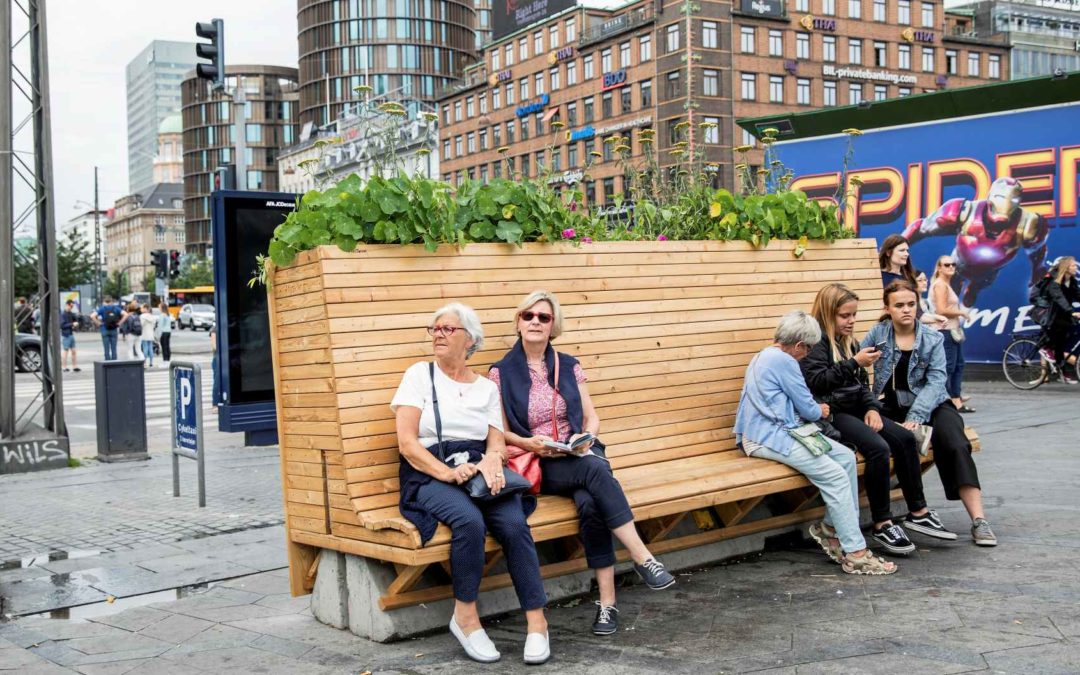Photo credit: TagTomat
In BLOXHUB, a new “Network for Smarter Counter-Terrorism” has been established to discuss how to secure buildings and urban spaces better against terrorism in Denmark. This summer, the network will publish a white paper with concrete advice in relation to their work with counter-terrorism.
Anyone living in a larger European city has probably noticed them: the concrete blocks, bollards, cameras and other security installations that dot the urban space to ward off terrorist attacks.
Last spring, architects, urban planners, researchers, police and city governments came together in BLOXHUB to discuss how we can create smarter solutions for safer cities that are also designed for people’s daily lives. The network was led by anthropologist and PhD Fellow Stine Ilum and Schønherr landscape architects. Stine Ilum established the forum to bring the many different actors in the field together and collaboratively come up with a Danish way of securing buildings and urban spaces in the best possible way. “The professional practice of counter-terrorism is characterized by being a mix of many different sectors with different professional backgrounds. To secure our cities in the smartest possible way in the future, we need cross-sector collaboration. No one can do it alone,” says Stine Ilum.
From risk analysis to landscape architecture
Both public and private actors as well as researchers joined the network, and the initial three meetings have resulted in a white paper that encapsulates the reflections and themes of their discussions. The paper will include 8-10 contributions from different stakeholders working with counter-terrorism. One contribution will deal with risk evaluations, certifications, and solutions, and is written by a number of private security firms. Another will focus on the aesthetic perspectives, such as securing landmarked buildings and designing landscape solutions, and is co-authored by a number of architectural firms. According to plan, the white paper will be presented at The People’s Democratic Festival (Folkemødet) in June 2019.
Everyday life in cities with counter-terrorism installations
Netwrk founder Stine Ilum’s own anthropological research focuses on the professional practice of counter-terrorism in Denmark, including the rationales and roles at play in the sector. Her project also investigates how counter-terrorism installations are perceived at street level as part of everyday city life. ”It is difficult to make a cause-effect analysis and say that visible counter-terrorism measures has a direct effect on people’s sense of safety and everyday life, but so far, I do know that many Copenhageners from time to time think about and fear terrorism in the urban space. And on a more general level we know that physical surroundings and the way we design our urban spaces have an effect on people and their everyday lives.”
Read more about the network in Politiken https://politiken.dk/indland/art6590800/Hvordan-skal-dansk-terrorsikring-se-ud
Denmark’s A-team in securing buildings
A number of new companies in the BLOXHUB community have joined the network, including UK engineering firm Thornton Tomasetti https://www.thorntontomasetti.com/ who will soon take over the leadership of the network. They will be joined by SLA https://sla.dk/en/ , a Danish landscaping firm that specializes in risk-reducing landscapes and is currently working on the rebuilding of the Government Quarter in Oslo.
“The Network has been an excellent opportunity to be introduced to Denmark’s A-team within design of secure buildings and urban spaces, and we are looking forward to taking over the leadership baton in collaboration with SLA,” says Marketing & Business Development Manager Tina Havsted.
Thornton Tomasetti’s references include the US embassy in London, NATO HQ in Brussels and the new World Trade Center Towers in Manhattan among others.
Urban designer and Head of SLA Oslo, Louise Fiil Hansen, is also looking forward to the collaboration.
“We need to find ways to create safe, open and attractive cities where integrated terrorism prevention goes hand in hand with open and democratic public spaces. With this network we are on the right track, and together with Thornton Tomasetti we look forward to continuing the fruitful exchange and cross-sector collaboration the network has initiated.”
SLA’s work in integrated terrorism prevention includes the risk-reducing landscape around the Criminal Court in Haag and the rebuilding of the urban spaces in the Government Quarter in Oslo.
The network’s next meetings will include site visits to cities, organizations and private companies. Meanwhile, the dialogue continues both in and outside the network.
“It is obvious that the members of the network have gotten to know each other personally by now and thereby made good professional contacts for future work. Let’s say that Municipality of Copenhagen one day would like to implement new antiterror solutions, through the network they have direct access to the insights and opinions of private companies and experts in the field,” says Stine Ilum.



